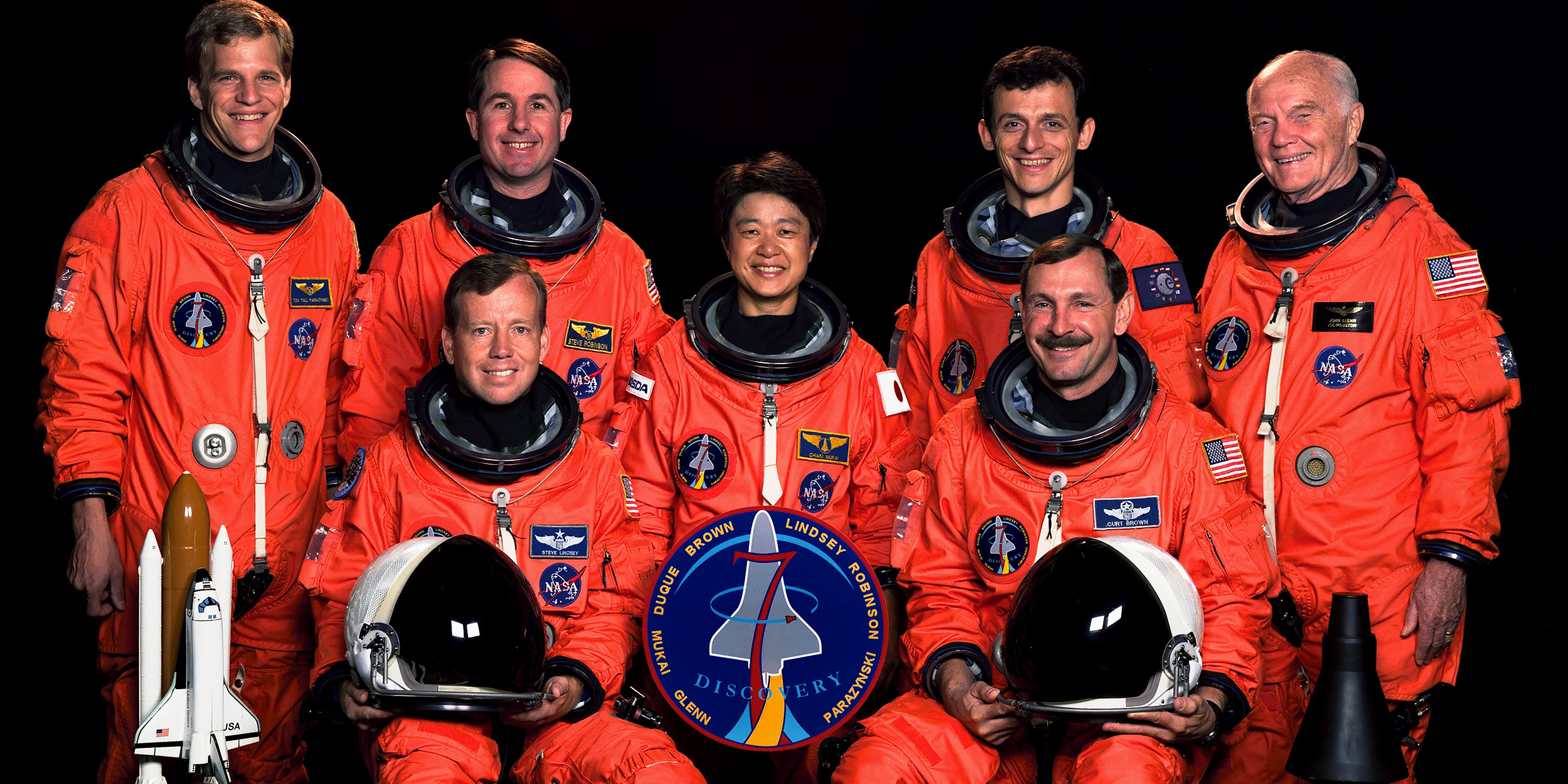Originally published 26 January 1998
John Glenn’s proposed return to space in October at age 77 is pure grandstanding on the part of NASA and the senator. The ostensible justification for the trip is a bit of a stretch: to study aging.
Thirty-six years after he became the first American to orbit Earth, Glenn says: “I want to contribute to learning about the ‘whys’ of aging.”
It is certainly true that both space flight and aging cause muscle deterioration and sleep disturbances, but the possibility that any significant science is going to be done on this 300-mile-high junket is pretty slim.
One thinks of Lewis Carroll’s verse:
"You are old, Father William," the young man said, "And your hair has become very white; And yet you incessantly stand on your head---Do you think, at your age, it is right?"
Well, why not? John Glenn is a true American hero, and if anyone deserves a Shuttle freebie, he does. But don’t hold your breath for a big breakthrough in gerontology.
Glenn’s announcement coincided with word from scientists at the University of Texas Southwestern Medical School and the Geron Corporation of California of a real breakthrough in gerontology. The researchers used a natural enzyme, called telomerase, to slow or halt the aging process in human cells.
They have apparently found a way to evade the so-called “Hayflick limit,” named after the researcher Leonard Hayflick, who discovered that human cells cultured in a test tube (reproducing themselves by splitting down the middle) normally stop dividing and die after about 50 divisions. Jerry Shay, leading researcher of the Texas group, says: “[Our] cells are now up over 100 population doublings and they show no evidence that they will slow down.”
Shay was appropriately coy when talking to the press: “We’re not saying that this will give people something to make them live longer.” Nevertheless, the stock price of Geron soared. Newspapers heralded a “fountain of youth.”
I happened to be sitting in a restaurant filled with folks on the gray side of 50 on the day the enzyme story broke, and it was on everyone’s lips. “Reverse aging!” someone gushed, and a flurry of hands moved optimistically to wrinkled cheeks.
The scientific study of aging has had its share of booms and busts, and any “fountain-of-youth” breakthrough should be taken with a heaping teaspoon of salt. However, this new work with telomerase looks promising.
Of course, some aspects of aging may be caused by normal wear and tear, and there is not much one can do about that. But evidence is growing that many organisms, including humans, are genetically programmed to age and die, and that’s the sort of thing that appeals to the new breed of genetic engineers, who have developed the skills to move genes about and turn them on and off.
The big question is why natural selection should have produced genes that are so obviously disadvantageous. If fitness is the goal of evolution, then where do gray hair, wrinkles, muscle deterioration, and sleepless nights come from? Not to mention death.
One answer may be the short lifespans of animals in the wild. External threats to life are normally so severe that few individuals live to old age. Genes that cause aging, whatever their source, will not be strongly selected against.
For another thing, it can be disadvantageous for a species if individuals live long past their peak breeding periods, using up resources that could go to more sexually active members of the population. A rapid decline and death might be just the ticket for breeders past their prime — at least as far as the group is concerned.
All of this is somewhat speculative, and the situation is probably more complicated than anyone supposes, but one thing seems utterly certain from an evolutionary point of view: Reproduction and death are inseparable.
If you’re gonna be making babies, then someone’s gotta die to make room for them.
At one end of the equation of reproduction and death is the brown marsupial mouse of Australia, a shrew-like creature that does it and dies with remarkable alacrity.
At the appropriate time of year, biological clocks tell male marsupial mice that it is time to mate. Hormones gush, not a now-and-then trickle, as in humans, but a sudden flood. Docile juveniles, less than a year old, are turned into sex-crazed adolescents. Their appetite for sex displaces all other concerns, including food, drink, grooming, sleep, and the avoidance of predators.
After a few frenzied days of non-stop copulation, the haggard male marsupial mice expire — every one of them! — having essentially gone from youth to old age in a flash. Their work is done. The next generation is assured. The females of the species can now manage quite well without them, thank you.
At the other end of the equation are humans, who with increasing success — and the expenditure of a hefty portion of our collective resources — manage to keep on kicking long past our peak reproductive years.
We latch enthusiastically onto every bit of news that promises even marginal delay of aging and death. We may not all get the chance to go into space at age 77, like the white-maned but still fit Glenn, but we’ll do our best to thwart the Hayflick limit if the gene engineers give us half a chance.



